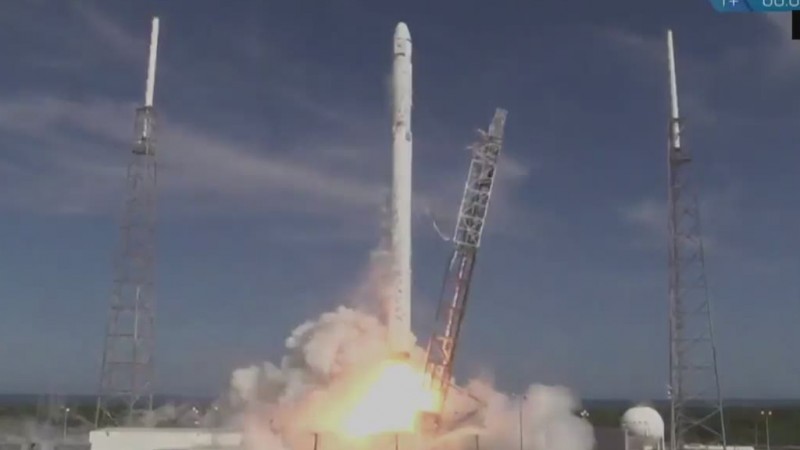SpaceX on Tuesday launched a two-stage Falcon 9 rocket carrying an uncrewed cargo spacecraft called Dragon on a flight from Cape Canaveral, Florida, to the International Space Station.
That was the easy part. In a difficult bid to land a rocket stage on a floating barge for the first time, the private space exploration company was unsuccessful.
SpaceX founder Elon Musk tweeted: “Ascent successful. Dragon enroute to Space Station. Rocket landed on droneship, but too hard for survival.”
He later clarified that the rocket landed, but tipped over.
SpaceX tried to land a Falcon 9 on the drone ship in January, but the rocket hit at an angle and exploded. SpaceX has said it will keep trying and, after it masters landing at sea, hopes to someday land rockets on the ground.
Usually booster rockets burn up in Earth’s atmosphere or, like NASA’s space shuttle boosters, they fall back into the ocean. So why try to land one?
Musk wants to cut costs. On his company’s website, he says that if anyone can figure out how to “reuse rockets just like airplanes, the cost of access to space will be reduced by as much as a factor of a hundred.”
What about the rest of the rocket and the Dragon? The smaller, top part of the rocket will carry the Dragon into orbit and then break away from the cargo ship and burn up in Earth’s atmosphere.
The Dragon will dock with the space station a couple of days after launch to deliver more than 4,300 pounds (1,950 kilograms) of supplies, including research equipment and ISSpresso, an espresso maker that astronauts can use to make coffee and tea.
The space station crew will spend about five weeks unpacking the Dragon. They’ll then stuff it with over 3,000 pounds of science experiments, trash and other stuff to send back to Earth. When they’re done, Dragon will leave the space station and mission controllers will guide it to splashdown in the Pacific Ocean off California.
This is the sixth SpaceX mission to the International Space Station. The company was the first private space contractor to dock with the station.
Tuesday’s launch was the second attempt for this mission. Monday’s planned launch was scrubbed due to weather.
